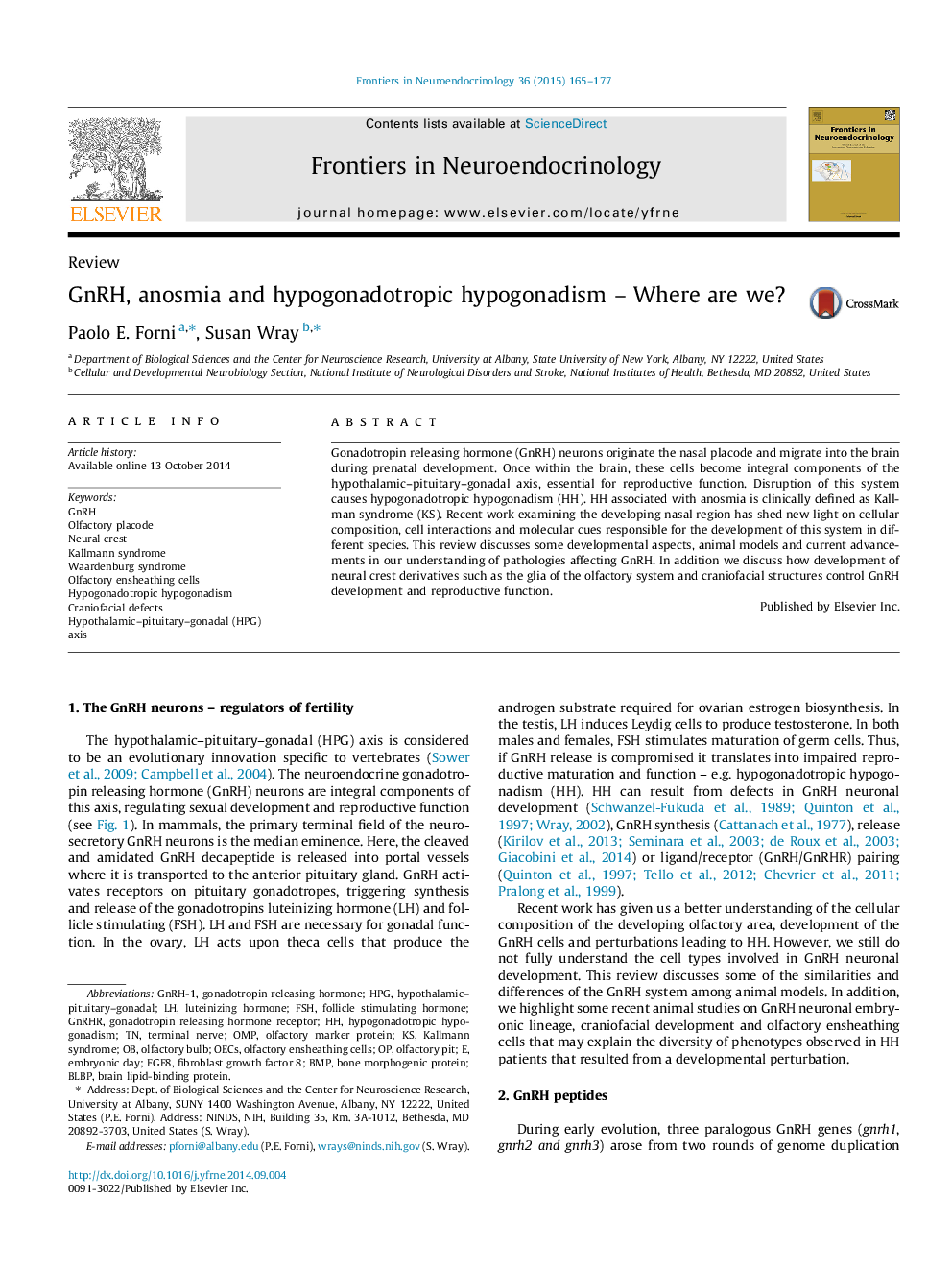| Article ID | Journal | Published Year | Pages | File Type |
|---|---|---|---|---|
| 5900623 | Frontiers in Neuroendocrinology | 2015 | 13 Pages |
â¢A general overview of the hypothalamic-pituitary-gonadal (HPG) axis is provided.â¢What are the different forms of GnRH peptides in vertebrates?â¢Defects linking anosmia and hypogonadotropic hypogonadism in animal models and humans.â¢Neural crest derivatives play key roles in neurogenesis and migration of the GnRH neurons.
Gonadotropin releasing hormone (GnRH) neurons originate the nasal placode and migrate into the brain during prenatal development. Once within the brain, these cells become integral components of the hypothalamic-pituitary-gonadal axis, essential for reproductive function. Disruption of this system causes hypogonadotropic hypogonadism (HH). HH associated with anosmia is clinically defined as Kallman syndrome (KS). Recent work examining the developing nasal region has shed new light on cellular composition, cell interactions and molecular cues responsible for the development of this system in different species. This review discusses some developmental aspects, animal models and current advancements in our understanding of pathologies affecting GnRH. In addition we discuss how development of neural crest derivatives such as the glia of the olfactory system and craniofacial structures control GnRH development and reproductive function.
